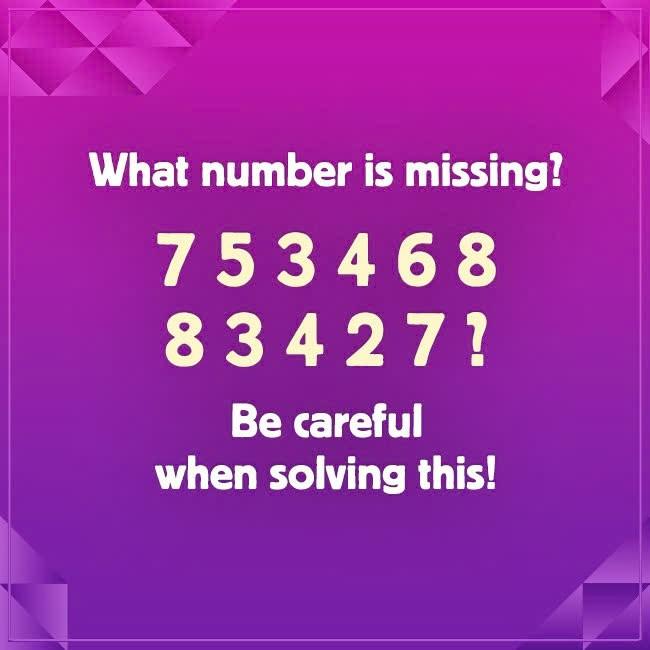Puzzles are a great way to stimulate our minds and sharpen our focus, especially when they appear simple but hide tricky patterns. In this case, we have a sequence puzzle with the numbers “753468 83427?”. The challenge is to identify the missing number represented by the question mark. Sounds easy? Think again. The trick here lies in recognizing a subtle pattern within the sequence. Let’s dive into this puzzle, explore common mistakes, and guide you through the solution step-by-step.
Why This Puzzle is So Tricky

At first glance, the sequence “753468 83427?” doesn’t seem to follow an obvious rule. Many people approach this puzzle by looking for patterns in standard sequences, like addition or subtraction between numbers or a recognizable arithmetic progression. However, the pattern in this puzzle is a bit more hidden. The puzzle’s subtlety lies in the alternating addition and subtraction sequence, which isn’t immediately apparent. This kind of puzzle tests both patience and sharp observation skills, as small details can make all the difference.
Common Mistakes When Solving This Puzzle
One reason people struggle with this puzzle is the inclination to look for overly complex mathematical formulas or to focus on the individual numbers rather than their relationship to each other. Here are some common pitfalls:
- Overthinking the Pattern: Many people jump into complex calculations, assuming the puzzle requires advanced math. However, the pattern is based on simple addition and subtraction.
- Missing the Alternating Sequence: The key here is to notice that each number relates to the next one by either adding or subtracting a specific amount. If you miss this alternating rule, the sequence can look completely random.
- Forgetting to Double-Check Each Step: Another common mistake is moving too quickly without verifying each part of the sequence. A small error in one part can throw off the entire answer.
Let’s break down the sequence and find the answer.
Step-by-Step Guide to Solving the Puzzle
To solve this puzzle, we will look at the relationship between each number in the string “753468” and “83427?” by analyzing the addition and subtraction pattern. The rule here is: First number + 1, second number minus 2, and so on.
Identify the Pattern of Changes:
Check the Pattern in the First Set (753468) against the Second Set (83427?)
7 to 8: Add 1 (7 + 1 = 8)
5 to 3: Subtract 2 (5 – 2 = 3)
3 to 4: Add 1 (3 + 1 = 4)
4 to 2: Subtract 2 (4 – 2 = 2)
6 to 7: Add 1 (6 + 1 = 7)
8 to 6: Subtract 2 (8 – 2 = 6)
Solution: The missing number is therefore 6.
Why This Solution Makes Sense
The sequence is based on a consistent, alternating pattern of adding and subtracting numbers. Once we recognize that the rule alternates between addition and subtraction, the solution becomes much clearer. The trick lies in realizing that each operation affects only the next number in line, making it appear more random than it actually is.
Engage with Us: Share Your Thoughts and Solutions
Now that we’ve walked through the solution, did you find it straightforward or challenging? This puzzle can be a great brain exercise because it pushes us to recognize patterns that aren’t immediately obvious. Let us know if you discovered the solution on your own or if our step-by-step breakdown helped.
Puzzles like these remind us of the importance of slowing down and observing the details. Sometimes, a simple addition and subtraction rule can be easily overlooked. We encourage you to share your answer in the comments or let us know if you have any unique strategies for solving such puzzles.
Conclusion: Keep Practicing to Sharpen Your Logic Skills
Puzzles like “What Number is Missing?” are not only fun but also an excellent way to develop critical thinking and pattern recognition skills. By working on puzzles that challenge your mind, you enhance your ability to see patterns and improve your logical reasoning. Try more puzzles like this, and watch your observation skills and problem-solving abilities sharpen over time. Remember, the key to solving puzzles isn’t just about finding the answer; it’s about enjoying the journey and exercising your brain along the way!


